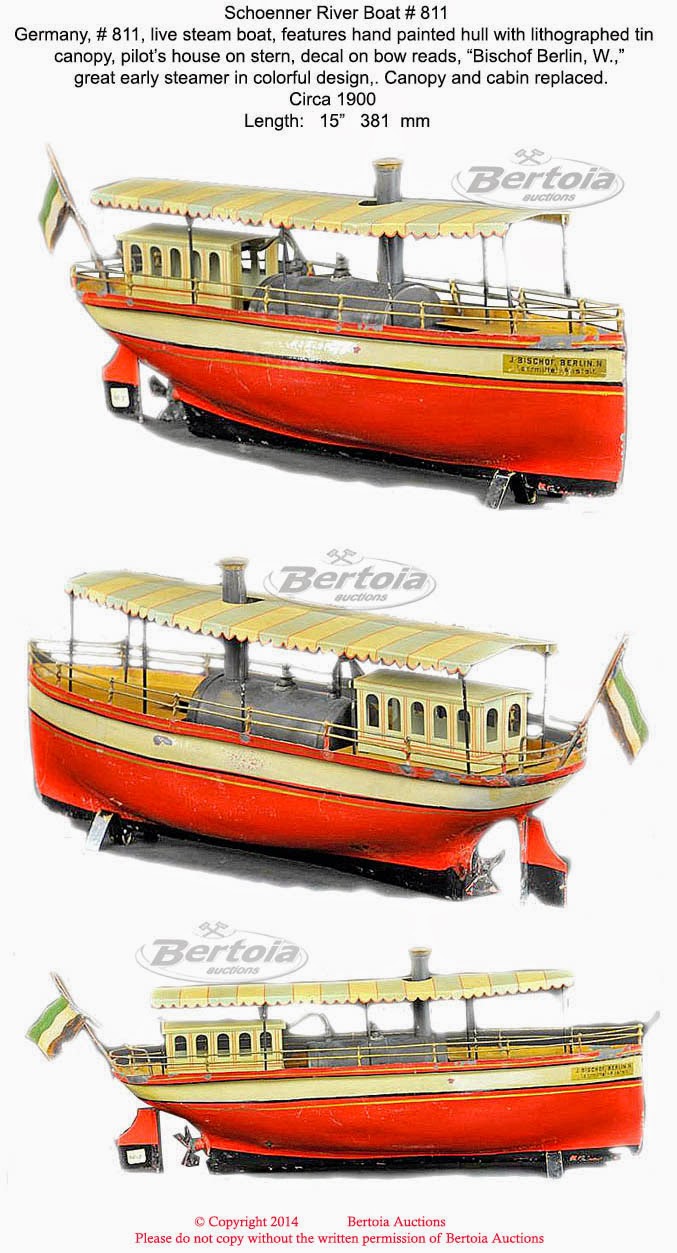Saturday, August 30, 2014
Partly sunny and colder with a
chance of rain
A Return to the
Beautiful American Mechanical Banks
Yesterday, I added a post titled "The Old Centurions". I had misspelled the word centenarian (100 years old) and had written centurion - a term for a battle-experienced roman leader of a group of soldiers. I like "my mistake" and so kept the word as the title. I was writing about the true antiques (100 year old and older) mechanical steam engines.
With the words century, centenarian, and centurion, I decided to return to American National Banks, which also are true antiques. At the time in the last quarter of the 19th century, many of the hardware companies made toys and banks for children. Their main products were the cast iron an depleted hardware that you would find in a house. These included door handles, door hinges, the metal frames for strung windows with weights, locks, and even cast iron door stoppers.
A mechanical bank differs from a normal bank in that you need to crank or activate a spring or "trigger" on the bank. You then place a coin on a part of the bank, and when you release the trigger, the coin "shoots' into a slot of the bank and is then saved.
* I am currently redirecting everyone to Bertoia Auctions past auctios. Like many companies on the Net, Bertoia is redoing their website, and it is "under construction" right now. When it is up and running, I will advise everyone. In the meantime, should you want to see their alters offerings and current or future actions, simply go to Liveauctioneers.
The word "hod" means a container for carrying bricks. It is the "V"-shaped item on the shoulder of the man in the red shirt and green hat. Mechanical banks are extremely popular in the United States, and there are even large internet sites that present lots of these banks and the history behind them.
The bank below has a more sophisticated movement and mechanism. The cupola ( the red-domed top of the building" would be in the closed position. When the doorbell lever is pushed (paint chipped and showing a brass-colorer metal), the cupola rises through the movement of three rods. The coin is placed on his hands, he then continues moving tilts his hands down, and the coins drops into the small slot in the front of him.
I wrote the description as it is written by the auctioneers. Also the description would have been written this way when the item is sold. Of course, today, I would describe the bank as
"A native American with a brown bear".
A bank made in 1883 is 131 years old. However, what I always like to think about is what was happening in 1883. When you try and relate the year of the toy's manufacture to historical events, the toy becomes all the more interesting.
Try that!
Of course, you're allowed to use Wikipedia to go back in time and check historical events!
With the bank below,there are more-complicated movements. Both the bear and the organ grinder move. Based on this, I would assume that this bank would be more softly than those that were simpler in their movements.
Of course, my assumption above only relates to the cost of the banks at the time of their manufacturer and sales. As it turned out, this particular bank which had complicated movements,
is not in the higher value when it comes to the antique market!
I'm sure a few are wondering how you get the money out of the bank when it full of coins. SOme of the banks allowed you to remove a part of the bank with a screwdriver, while others might have had a small plug at the bottom.
A word of Caution:
I've written about mechanical banks before, and one time I presented one of mine - a reproduction probably made in China or India in the 1990's or early 2000's. Like many other companies that are no longer in business and have not been bought by a newer company, their products can be freely reproduced. Also, the toys can be reproduced if the intellectual properties or inventions have not been purchased. So you have to be sure that if you ever go to a flea market.garage sale, or antique store, that you ask lots of questions. Otherwise you may be buying a reproduction . It's better than calling it a fake, and of course it's perfectly legal to remake these toys!
Thanks for dropping by to visit,
and as always,
have a great part of the day or night,
wherever you may be
Stacey
toysearcher@gmail.com

















































